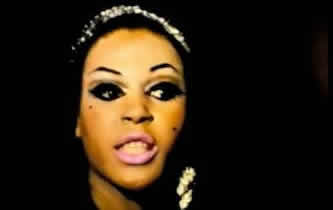
Crystal LaBeija
By: Dennis Richmond, Jr.
Entering a ballroom in New York is like stepping into a dazzling showcase of talent and expression, featuring butch queens, the girls, and maybe even some trade. These terms capture the essence of the LGBTQ+ community thriving in the city’s rich ballroom culture—a vibrant form of expression rooted primarily in Black and Latinx communities.
Ballroom culture traces its origins back to the Harlem Renaissance, with influences that can even be seen as far back as the 19th century. The scene has evolved significantly, particularly since the 1970s when the first ballroom houses began to take shape. A “house” represents a chosen family or community, providing support and camaraderie for its members. Sajuan Scott, an international vogue instructor and Kiki Scene icon, emphasizes the importance of houses, stating, “A house is important within ballroom because it grants people seeking acceptance a feeling of assurance and security. It also enhances the chance to practice talents among peers who understand the journey.”
In 1972, two pivotal figures, Crystal LaBeija and Lottie LaBeija, hosted a groundbreaking ball specifically for Black and Brown LGBTQ+ individuals. Titled “Crystal & Lottie Presents: The 1st Annual House of LaBeija Ball,” this event emerged after Crystal faced discrimination at the All-America Beauty Pageant in the late 1960s. It was during this time that she coined the term “house,” marking a significant milestone in ballroom history.
Fast forward to 2024, and ballroom culture continues to thrive and evolve. Isaiah Latimer, who works under the moniker Constance Lee Busted, reflects on the importance of pioneers like Crystal and Lottie. He expresses gratitude for their perseverance, stating, “They were pioneers who didn’t give up.”
In conclusion, the ballroom scene stands as a powerful testament to resilience and creativity, enriching New York’s culture. By providing a space for self-expression and connection, it honors the legacy of those who came before while fostering a sense of community that thrives today. As seen in the recent events in Yonkers and Mount Vernon, the spirit of ballroom culture continues to unite and inspire during Pride Month, ensuring that its vibrant essence remains an integral part of the ongoing celebration of diversity and identity in our city.
Thank you, Crystal LaBeija and Lottie LaBeija.
Dennis Richmond, Jr., an educator, historian, and writer, illuminates the experiences of Black, Latinx, and LGBTQ+ communities in Yonkers and NYC through his journalism. Stay connected with him by following @NewYorkStakz on social media.





